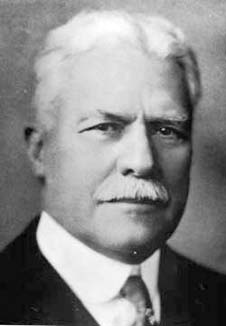


 تاريخ الرياضيات
تاريخ الرياضيات
 الرياضيات في الحضارات المختلفة
الرياضيات في الحضارات المختلفة 
 الرياضيات المتقطعة
الرياضيات المتقطعة
 الجبر
الجبر
 الهندسة
الهندسة 
 المعادلات التفاضلية و التكاملية
المعادلات التفاضلية و التكاملية 
 التحليل
التحليل
 علماء الرياضيات
علماء الرياضيات |
Read More
Date: 4-4-2017
Date: 2-4-2017
Date: 2-4-2017
|
Died: 10 January 1944 in Poughkeepsie, New York, USA

Thomas Fiske attended the Old Trinity Church School in New York, then the Pingry School in Elizabeth, New Jersey. Fiske entered Columbia College in 1882, thirty years before it became Columbia University, receiving his A.B. in 1885 and his A.M. in 1886. From 1886 to 1888 he was both an assistant at Columbia College and undertaking research for his doctorate.
In 1887, in Fiske's second year of graduate studies, Van Amringe suggested that he should spend at least six months in England at the University of Cambridge. He arrived with letters of introduction written by G L Rives, a trustee of Columbia College who had been a wrangler at Cambridge in 1872. With letters addressed to Cayley, Glaisher, Forsyth and Darwin, Fiske was well placed to take advantage of his time at Cambridge. He writes in [3]:-
Scientifically I benefited most from the instruction and advice of Forsyth and from my reading with Dr H W Richmond, who consented to give me private lessons. However, from Dr J W L Glaisher, who made me an intimate friend, who spent many an evening with me in heart to heard talks, who took me to meetings of the London Mathematical Society and the Royal Astronomical Society, and entertained me with gossip about scores of contemporary and earlier mathematicians, I gained more in a general way than from anyone else. I had attended only a few lectures by Cayley on 'The calculus of the extraordinaires' when, slipping on the ice, he suffered a fracture of the leg, which brought the lectures to an end.
Back in the United States, Fiske completed his research being awarded his doctorate in 1888. He was appointed a tutor in mathematics at Columbia University in 1888 and was successively promoted to instructor in 1891, adjunct professor in 1894, and full professor in 1897. He held the post of professor at Columbia from then until he retired in 1936.
Fiske is of little importance as a research mathematician. He published a few papers on elliptic integrals and surface integrals during his career, as well as a number of papers on mathematical education. Later in has career he wrote some encyclopaedia articles on elliptic functions, functions of real and complex variables and a couple of others.
His real importance, however, is that he was the founder of the American Mathematical Society in 1888. He served the new Society in a variety of ways, for example as secretary from 1888 to 1895, as treasurer from 1890 to 1891, as editor-in-chief of the Bulletin of the American Mathematical Society from 1891 to 1899, as vice-prisident of the Society from 1898 to 1901, as editor of the Transactions of the American Mathematical Society from 1899 to 1905 and as president of the Society from 1903 to 1904.
Archibald [1] talks of:-
... the enormous debt which the Society owes to its able Founder, whose enthusiastic activities on her behalf during the first fifteen years of her existence, were so unremitting and so wise.
Articles:



|
|
|
|
تفوقت في الاختبار على الجميع.. فاكهة "خارقة" في عالم التغذية
|
|
|
|
|
|
|
أمين عام أوبك: النفط الخام والغاز الطبيعي "هبة من الله"
|
|
|
|
|
|
|
المجمع العلمي ينظّم ندوة حوارية حول مفهوم العولمة الرقمية في بابل
|
|
|